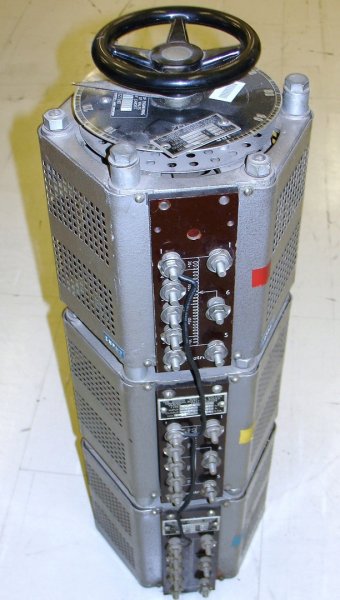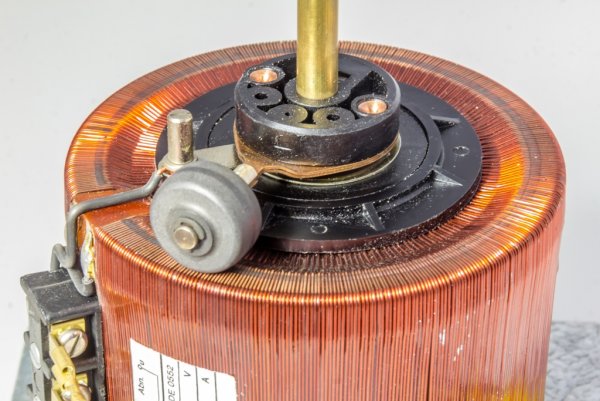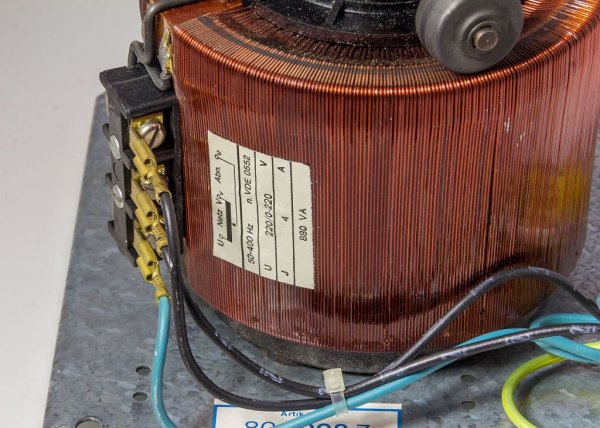LATR (laboratory autotransformer) — device, principle of operation, types and application
LATR - adjustable laboratory autotransformer - one of the types of autotransformer, which is a relatively low-power autotransformer and is designed to regulate alternating voltage (alternating current) supplied to the load from a single-phase or three-phase alternating current network.
LATR, like any other mains transformer, is based on an electrical steel core. But on the toroidal core of the LATR, unlike other types of network transformers, only one winding (primary) is placed, part of which can act as a secondary, and the number of turns of the secondary winding can be quickly adjusted by the user, this is the distinguishing feature of LATR from simple autotransformers...
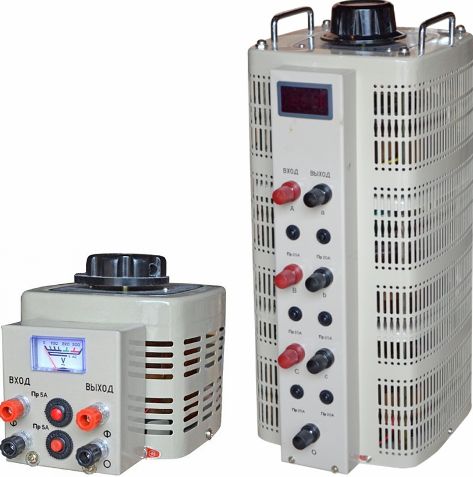
To adjust the number of turns of the secondary winding, the autotransformer has a rotary knob to which a sliding carbon brush is connected. When you turn the handle, the brush slides from turn to turn on the coil so it can be adjusted transformation factor.
One of the secondary outputs of the laboratory autotransformer is directly connected to the sliding brush. The second secondary terminal is shared with the input side of the network. Consumers are connected to the output terminals of the LATR, and its input terminals are connected to a single-phase or three-phase electrical network. In single-phase LATR there is one core and one winding and in three-phase there are three cores and each has one winding.
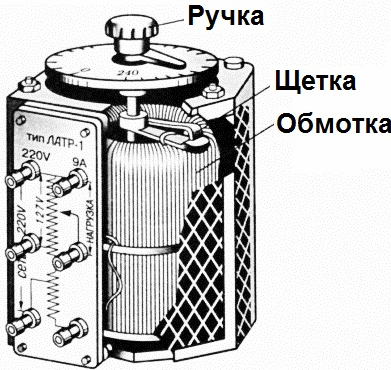
The LATR output voltage can be either higher than the input voltage or less, for example, for a single-phase network, the adjustable range is from 0 to 250 volts, and for a three-phase network - from 0 to 450 volts. It should be noted that the efficiency of the LATR is higher the closer the output voltage is to the input and can reach 99%. Output voltage waveform — sine wave.
There is a secondary voltmeter on the front panel of the LATR for operational overload control and more accurate output voltage adjustment. The LATR box has ventilation holes through which natural air cooling of the magnetic circuit and coil takes place.
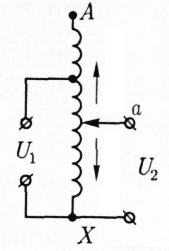
Laboratory autotransformers are used in laboratories for research purposes, for testing AC equipment and simply to manually stabilize the mains voltage if it is currently below the required rating.
Of course, if the voltage in the network constantly jumps, then the autotransformer will not save, you will need a full-fledged stabilizer. In other cases, the LATR is just what you need to fine-tune the voltage for the task at hand.Such tasks can be: setting up industrial equipment, testing highly sensitive equipment, setting up electronic devices, supplying low voltage equipment, charging batteries, etc.
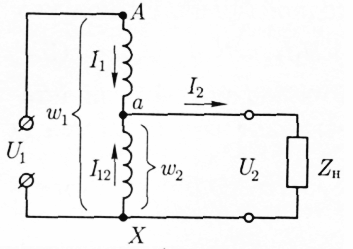
Since the LATR has only one winding common to the primary and secondary circuits, the secondary current is also common to the primary and secondary circuits. From this point of view, it is obvious that the secondary current and the primary current in the common turns are directed oppositely, therefore the total current is equal to the difference between the currents I1 and I2, that is, I2 — I1 = I12 is the current in the common turns. Thus it turns out that when the value of the secondary voltage is close to the input, the common turns can be wound with wire of smaller cross-section than in the case of a two-winding transformer.
Three-phase autotransformer:
Autotransformer 0-220 V, 4 A, 880 VA:
The design feature of LATR forces us to separate the concepts of "throughput" and "design power".
The rated power is that transmitted from the primary winding to the secondary circuit by electromagnetic induction through the core, as in a conventional two-winding transformer, and the transmitted power is the sum of the transmitted power and the power transmitted only through the electrical component, that is, without the participation of the magnetic induction in the core.
It turns out that in addition to the calculated power, a purely electrical power equal to U2 * I1 is transmitted to the secondary circuit. This is why autotransformers require a smaller magnetic core to transmit the same power compared to conventional two-winding transformers. This is the reason for the higher efficiency of autotransformers.Also, less copper is required for the wire.

So, with a small transformation ratio, LATR can boast the following advantages: efficiency up to 99.8%, smaller size of the magnetic circuit, lower consumption of materials. And all this is due to the presence of an electrical connection between the primary and secondary circuits. On the other hand, the absence galvanic isolation between the circuits leads to the danger of damaging the phase current from the output terminals of the LATR and even from one of the terminals, therefore it is necessary to be extremely careful when working with the laboratory autotransformer.

